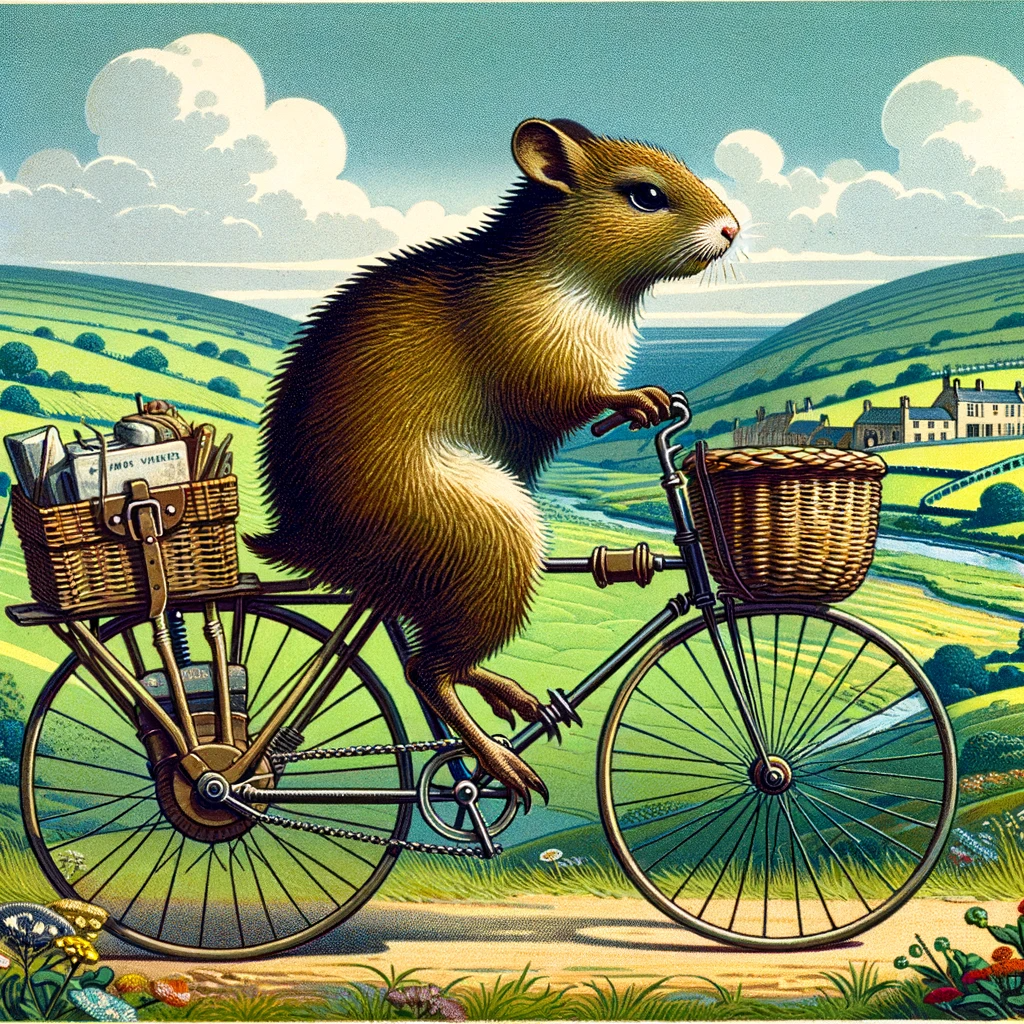

If the campaigners are right and what he’s done is illegal then opinions don’t really matter, he shouldn’t be allowed to conitnue pushing this course of action.


If the campaigners are right and what he’s done is illegal then opinions don’t really matter, he shouldn’t be allowed to conitnue pushing this course of action.


That was my thought, but it could also have been aimed at the people fighting against the depedestrianisation.


I’m intrigued, which part of the story are you saying that about?
If you’re hitching a trailer anyway then why bother with the truck bed at all? Just get a minivan with a decent engine.
How many buses were there supposed to be? How long were you out for?


If you are saying that you support the construction of comprehensive segregated cycle paths then I am very much on your side.
Yes they can have their lane
It would be nice if motorists also kept to their lane, then. Too often I find my cycle lanes blocked by drivers who feel that the road was"entirely built entirely by motorists for motorists". I would also be happy to keep to my lane if it always existed. As it is, a lot of the time I’m left with no other choice but to join with the motor traffic as the cycle lanes just stop existing. In the UK it’s illegal to ride on the pavement, and I’m sure you wouldn’t want me to become another cyclist who just ignores the law for his own benefit?
It’s also important to note here that the UK now has the Hierarchy of Road Users, which explicitly states that the more vulnerable the road user, the more priority they should be given. Pedestrians have top priority, followed by horses, followed by cyclists, and then with motorised traffic at the bottom. It’s a very new development, and one that I don’t think has been tested in law yet, but it’s there in our Highway Code.


Depends on your country. Here in the UK roads are maintained using funds from the general tax pool, so the cyclists are actually subsidising the motorists, who proportionally do a lot more damage to the road surface.


As I’ve mentioned elsewhere, in the UK (which is where this image seems to be from), the “safe” passing distance for a car overtaking a bike is supposed to be 1.5m. Add that to the 0.5m minimum distance the cyclist is supposed to be from the kerb and the width of the cyclist themselves, and overtaking even a single cyclist should have the car almost entirely in the other lane anyway (UK lanes are typically narrower than their US counterparts).
Whether anyone actually follows those rules is another question, but that is how motorists are supposed to behave.
It is also written into our Highway Code that motorists should “give motorcyclists, cyclists and horse riders and horse drawn vehicles at least as much room as you would when overtaking a car”


The image appears to be from the UK. Here in the UK cyclists are supposed to stay at least 0.5m from the kerb, with a recommendation for more distance if possible (rule 72 of the Highway Code). Cars are supposed to keep at least 1.5m away from cyclists when overtaking (rule 163). Taking an average cyclist width of 60cm (some handlebars go much wider than that, as might pannier bags, but let’s use that as an average), that means a single cyclist should have control of ~2.6m of the lane at least.
Let’s say that the average lane on urban roads in the UK are around 3m wide (an estimate based on a quick google, not a rule), this means a legal overtake of a cyclist should have the car leaving no more than 40cm of the car in the lane. It’s not a big jump from that to moving entirely into the other lane.
Admittedly almost no one in the UK actually follows these rules, but this is how it’s supposed to be. Given that, adding another cyclist riding abreast shouldn’t affect overtaking time significantly, whereas the two cyclists riding in line will double the amount of time in the oncoming lane.


Public transport? Or cars. Some people on here may be militant about getting rid of all cars, but most of us aren’t that extreme. We simply want to have the option to not use cars, which is currently not the case in many regions of the world.


Body mods that look good in the traditional sense are generally called plastic/cosmetic surgery. Breast implants, face lifts, hair implants, etc. are the same idea as body mods, just with the goal of achieving a more mainstream idea of beauty.


It was a massive event. Most definitely not my scene (I’m more of a quiet bike ride fan) so I didn’t join in, but it was great to see so many people out cycling. We have monthly mass cycle events in Sheffield but this was easily 5, perhaps even 10 times as many people. Hopefully it will have raised awareness of the number of people actually riding bikes in the city, which may lead to more investment in bike infrastructure.


I’m honestly shocked this hasn’t happened already. How can a world class museum not have a centralised inventory of all its items?
The shortest song I ever found at a karaoke place was You Suffer by Napalm Death. It’s 1.3 seconds long.


My city has been stuck trying to expand its tram system for decades at this point, but whenever I mention that we could introduc trolley buses instead people look at me like I’m crazy!
They just make so much sense for our use case. We’re a hilly city, so the rubber tyres are more suitable than steel on steel, the routes they want to build on don’t really have the space for separated infrastructure, so having buses that can run on the roads will be less disruptive, and by not having to install rails they’re a lot cheaper too.


Because images like this are still relevant no matter how the cars are powered.
Running an electric car is obviously greener than running an ICE car, but producing one is most definitely not environmentally friendly. If we can reduce the number of vehicles on the road, including electric cars, that would go a long way to reducing carbon emissions.
There’s also the case to be made around the environmental impact of (sub)urban sprawl, which generally comes about as a direct result of car dependency.


For what it’s worth the UK uses mph and we’ve had the Internet for a little while now too, and here e-scooters are technically illegal to ride anywhere other than on private land, i.e. not on pavement, on bike lanes or on the road.
The exception is if you’re in one of the cities which is operating a “trial” rental scheme, in which case the rental company will let you know where they think you should ride. But I believe even in those areas privately owned e-scooters remain illegal to use in public.


I got this bike a year ago and it was the best decision I ever made regarding my personal transportation. I’m so glad to see the wider biking community take notice of this lower end of the market.
How do you know the output is an accurate translation?